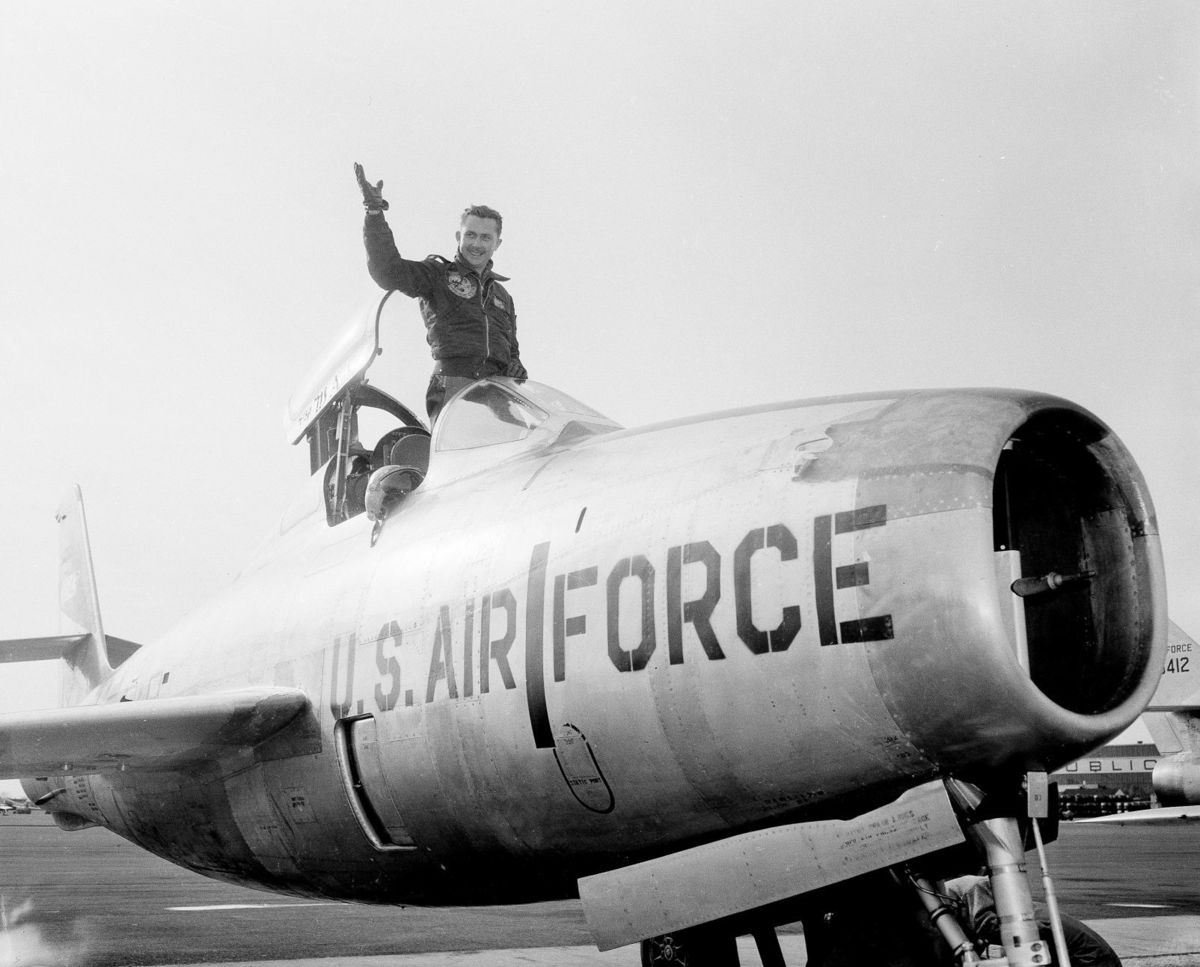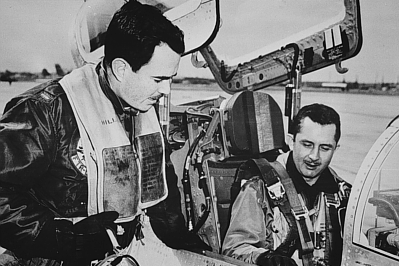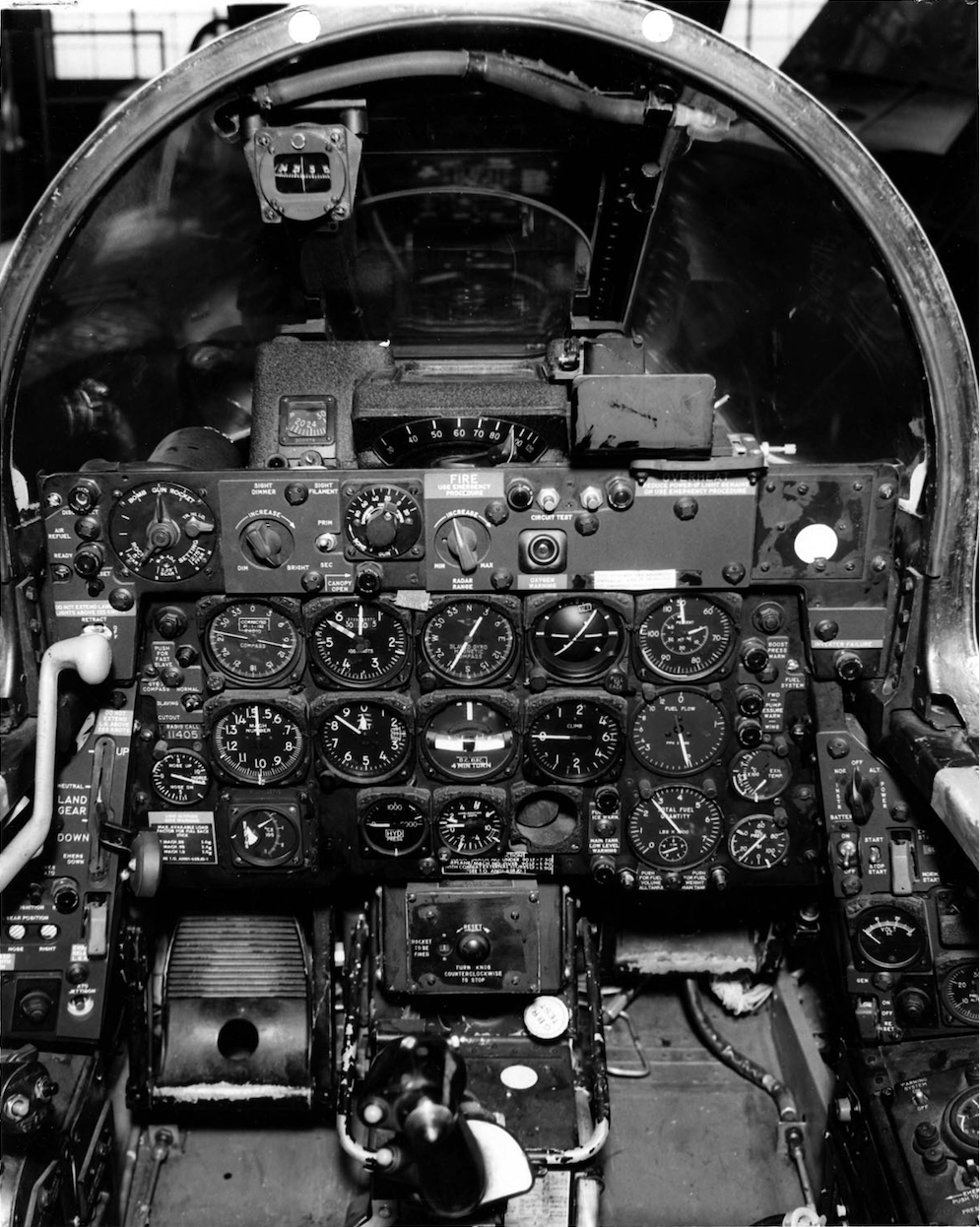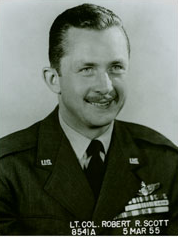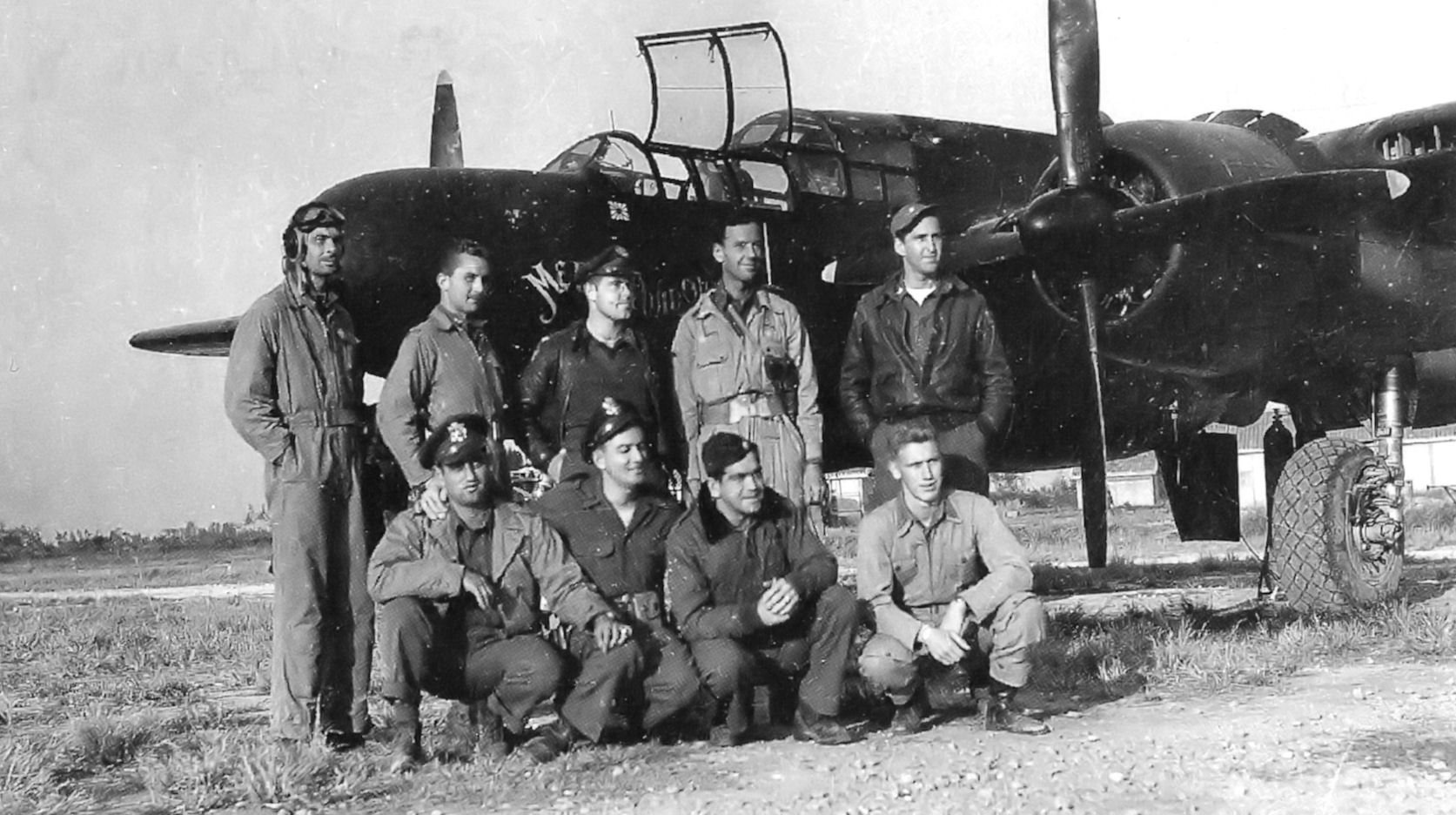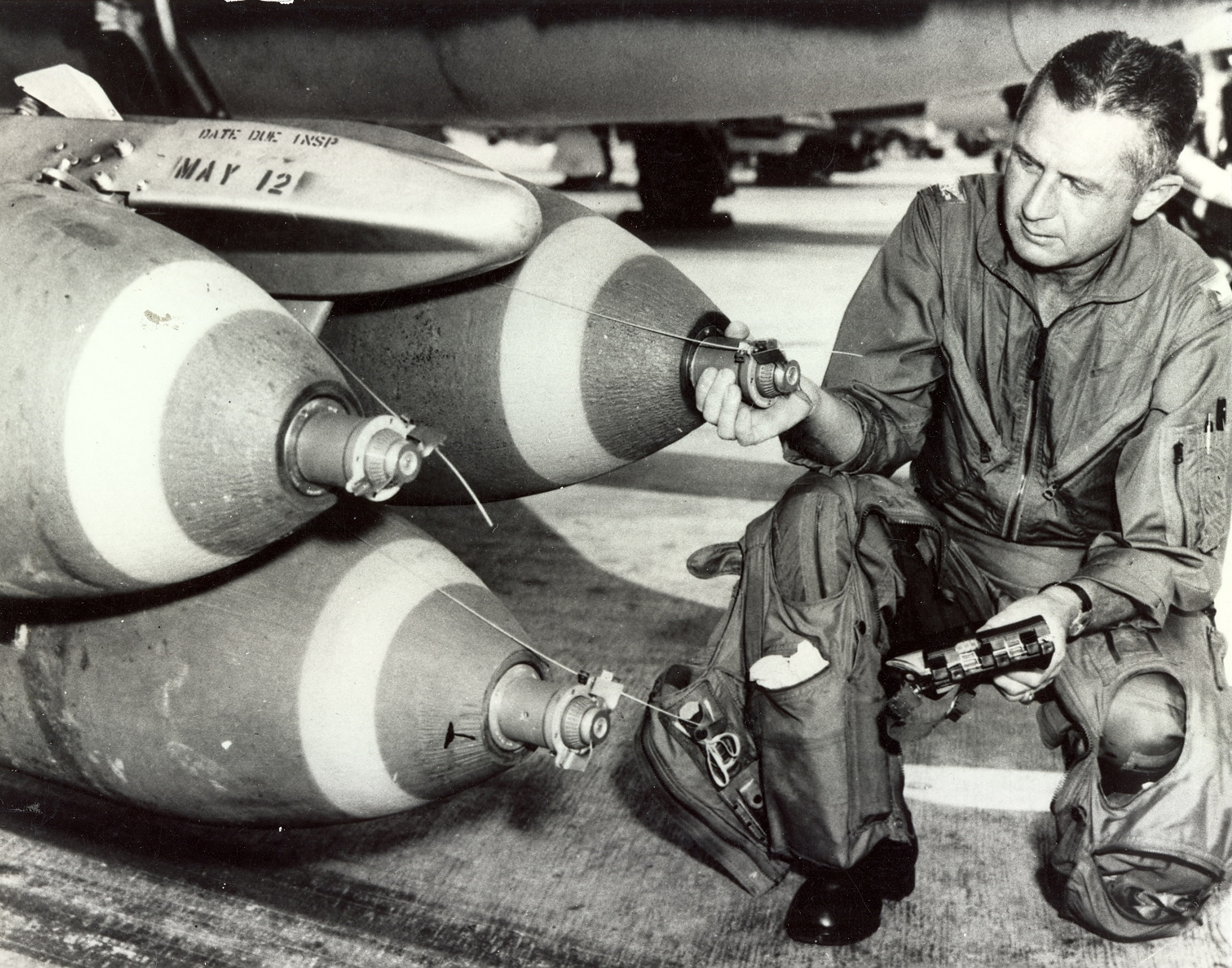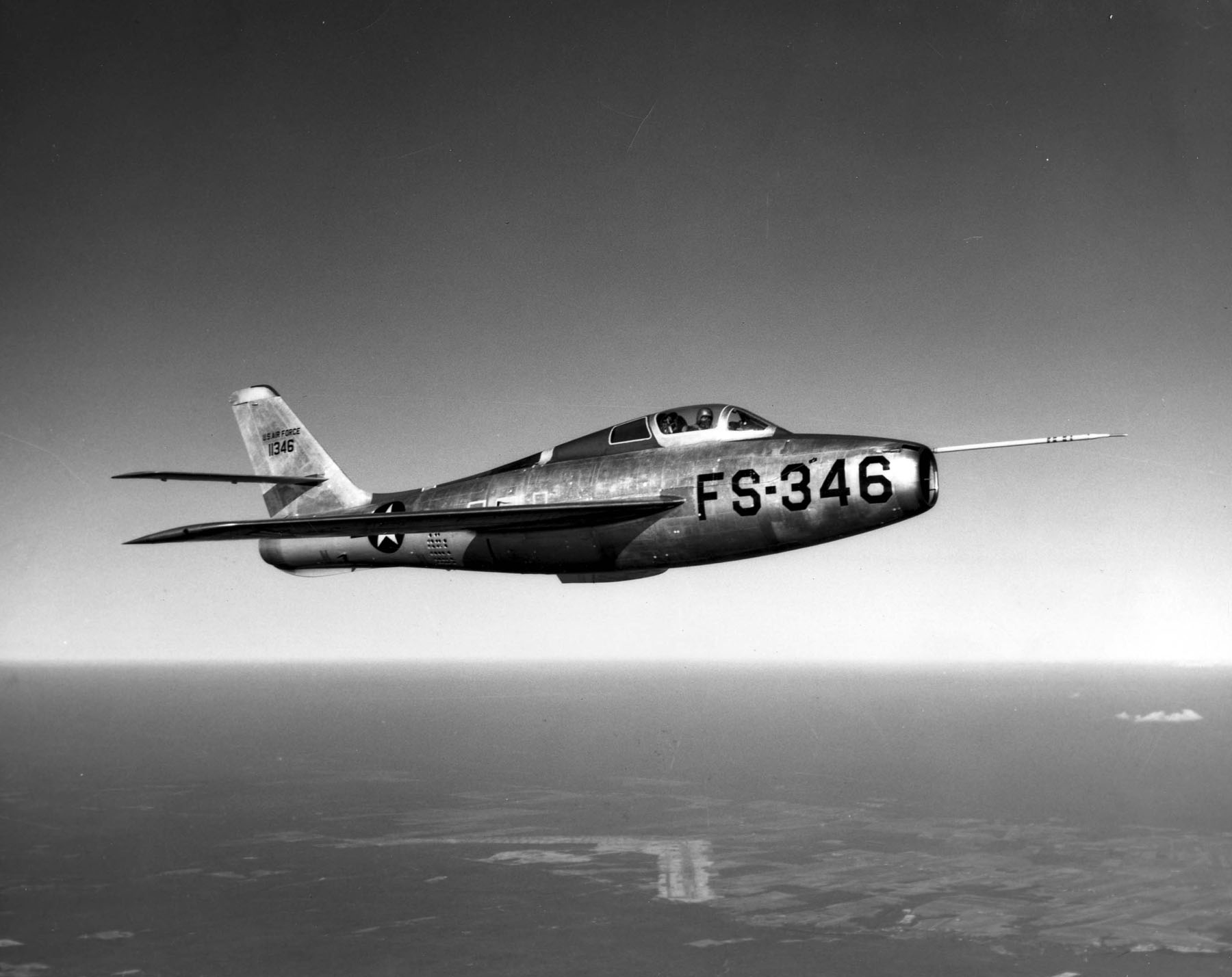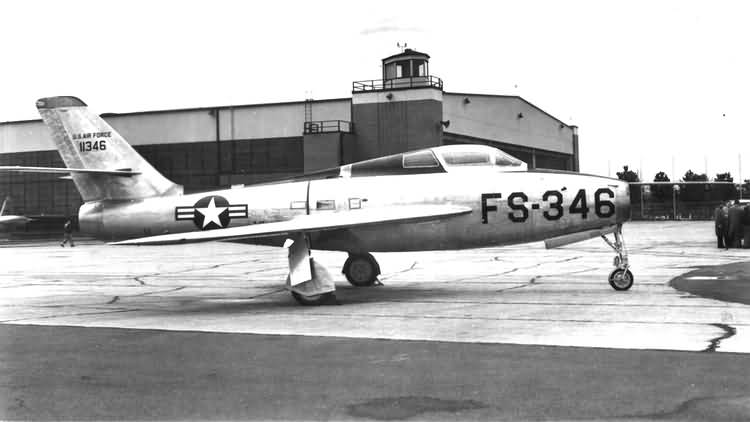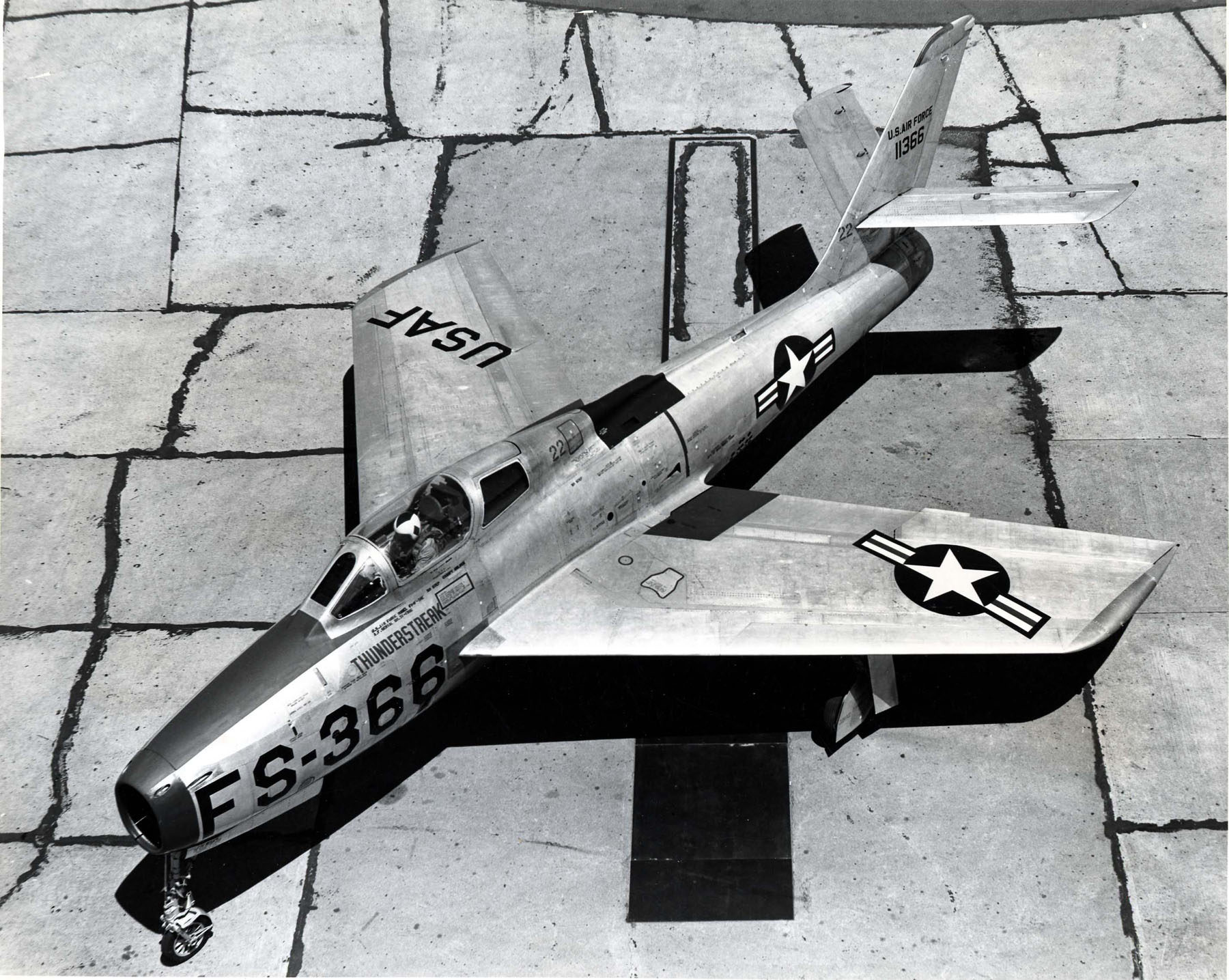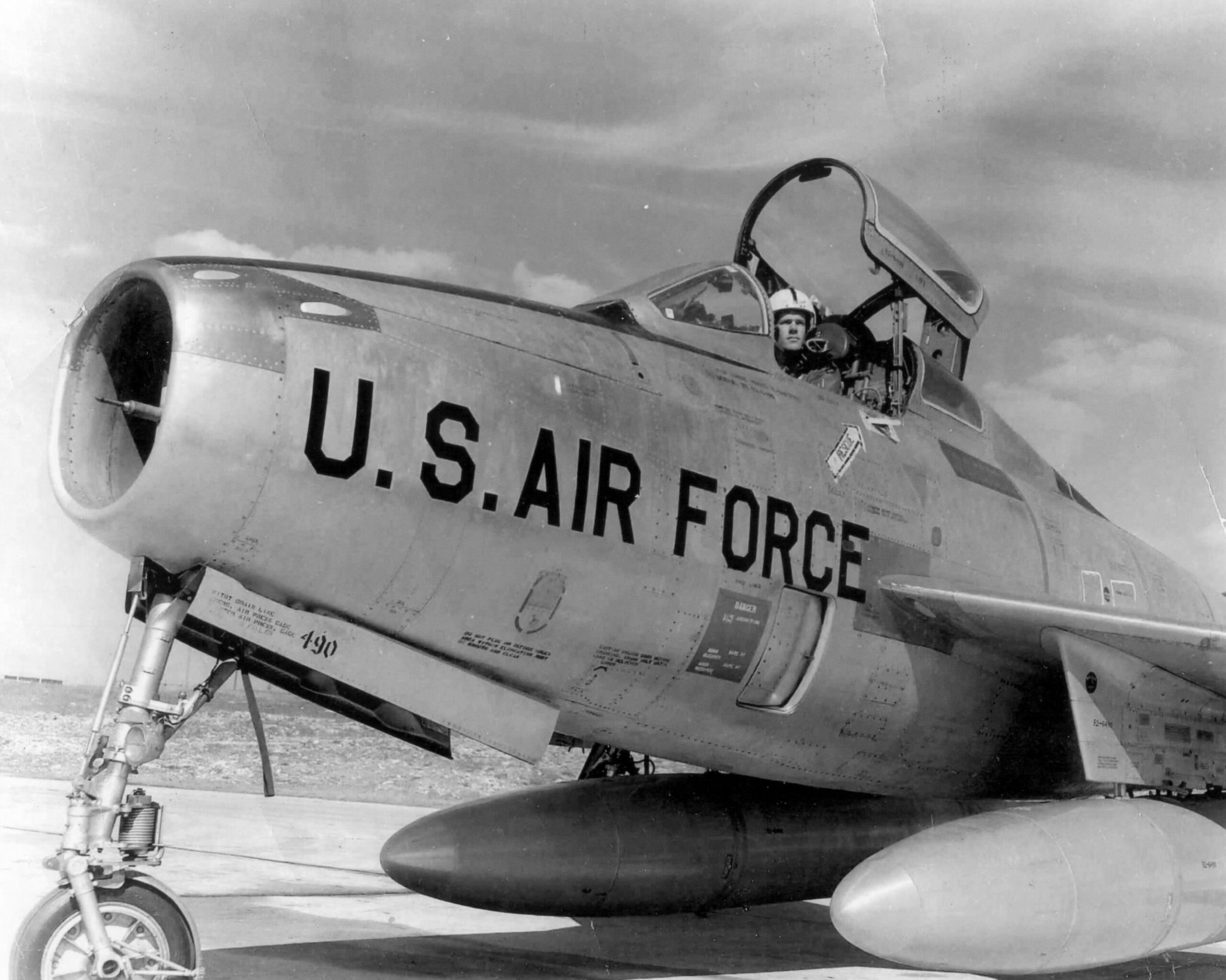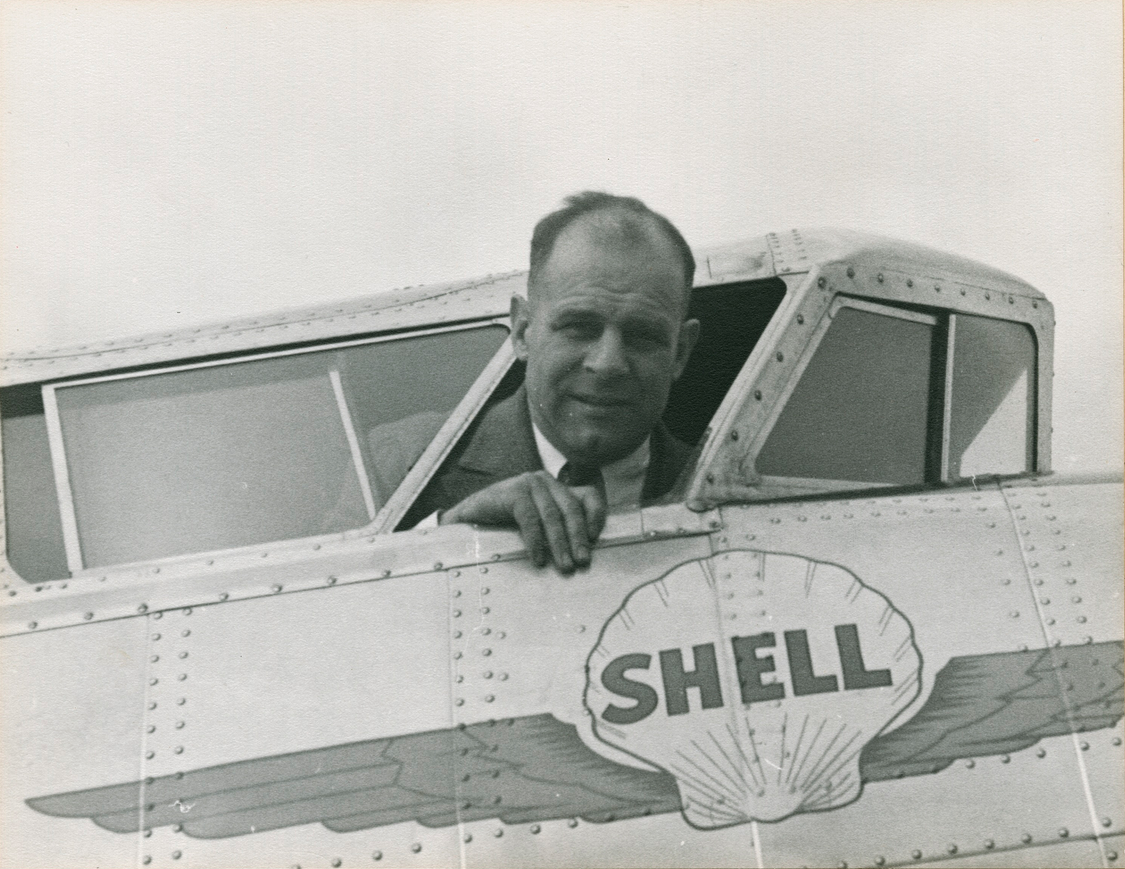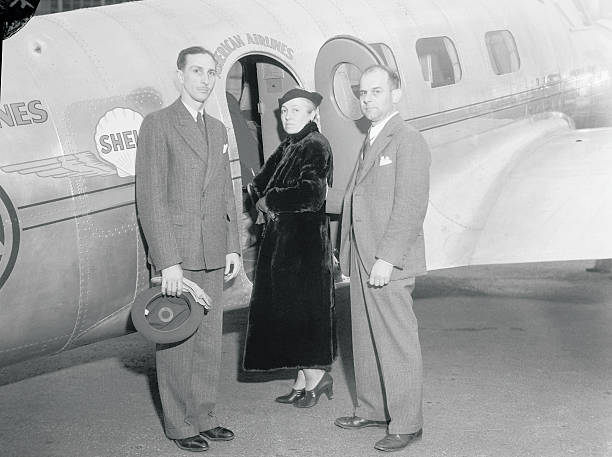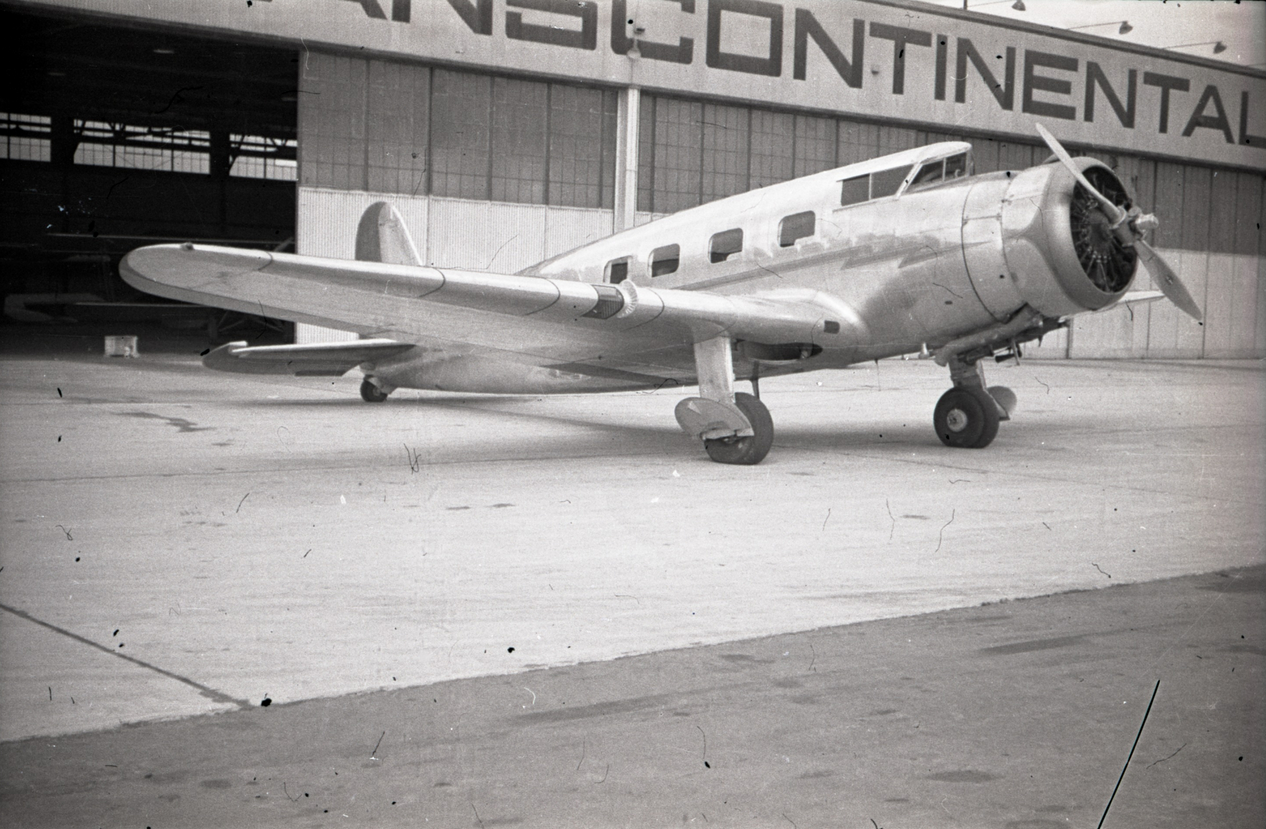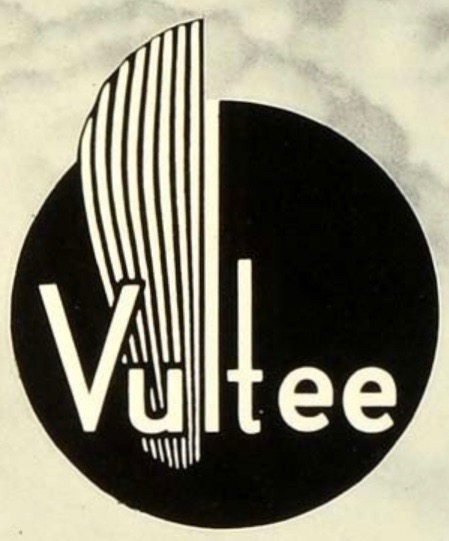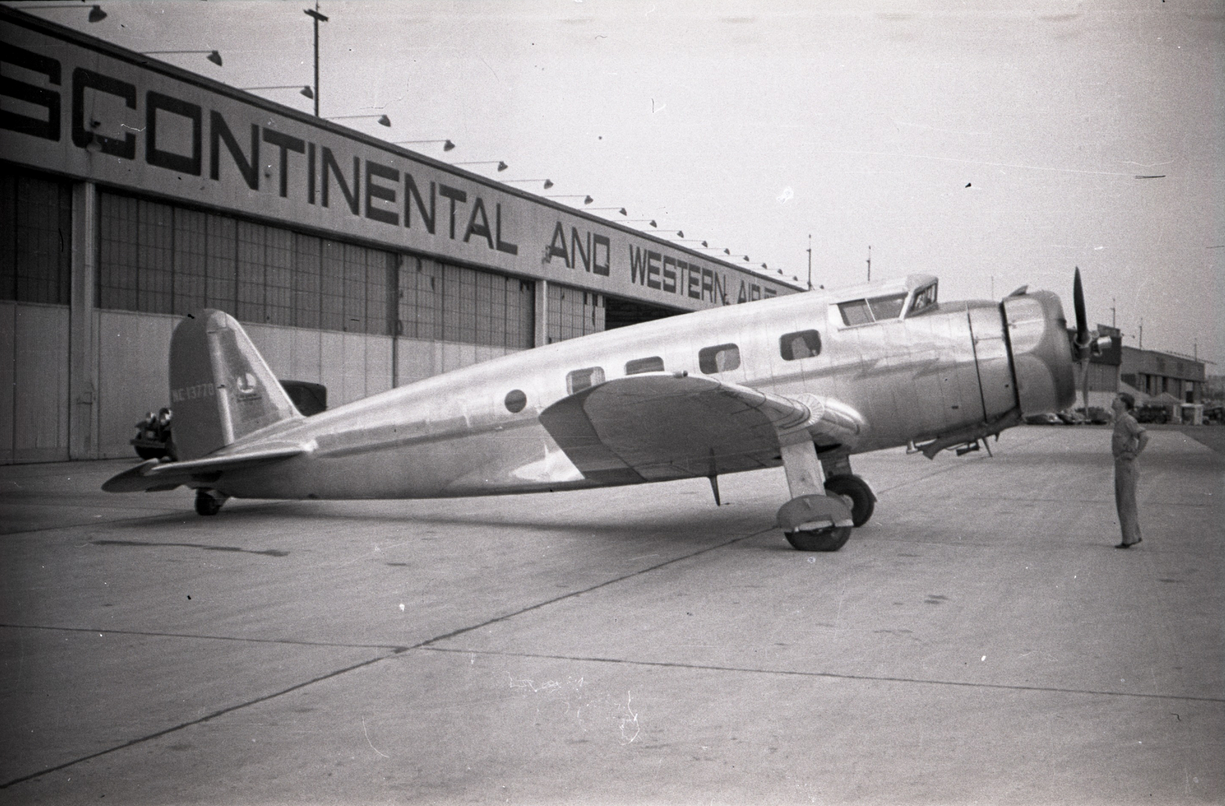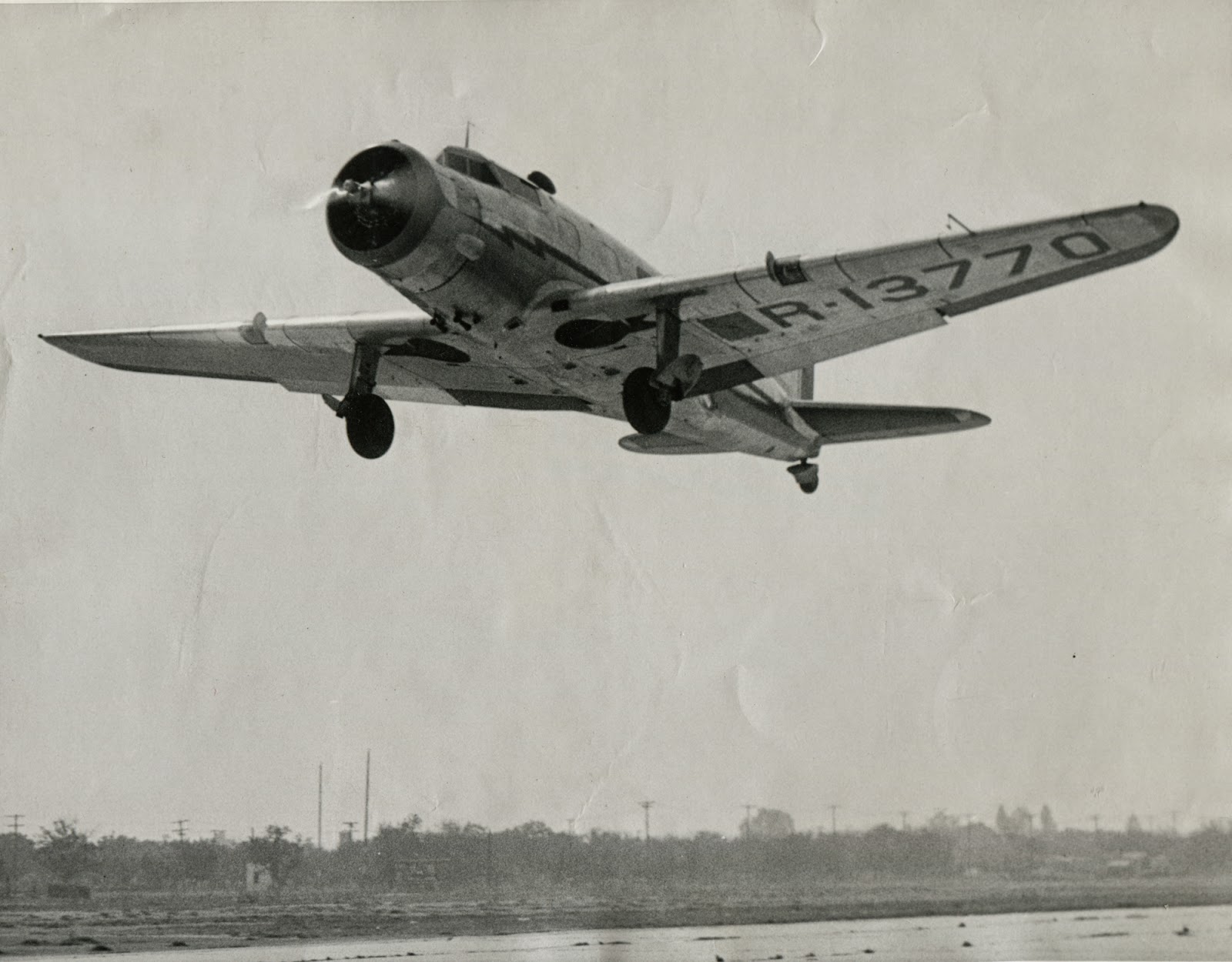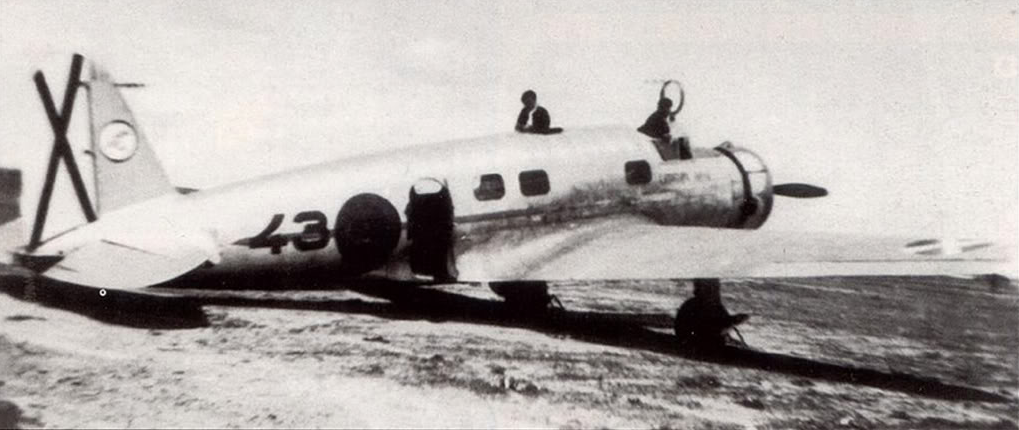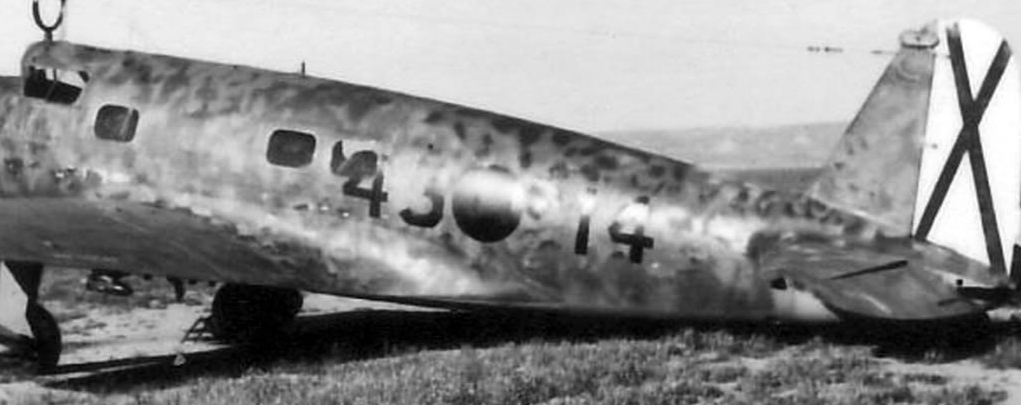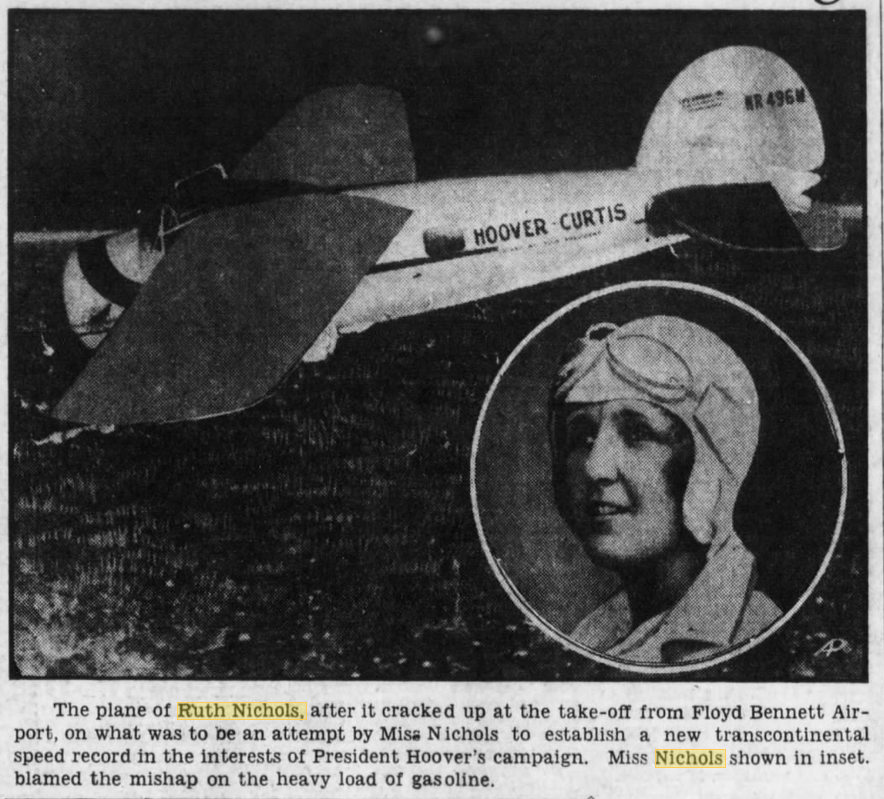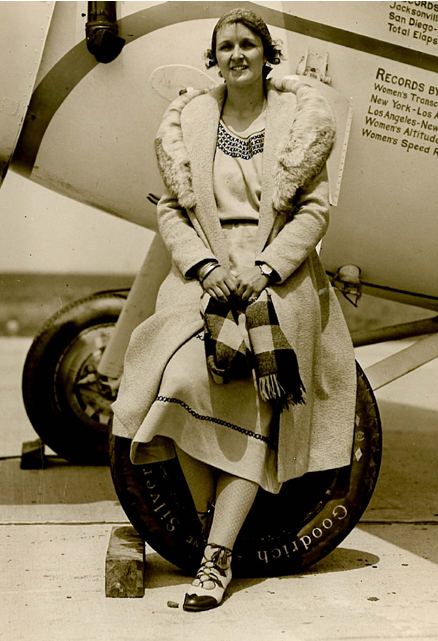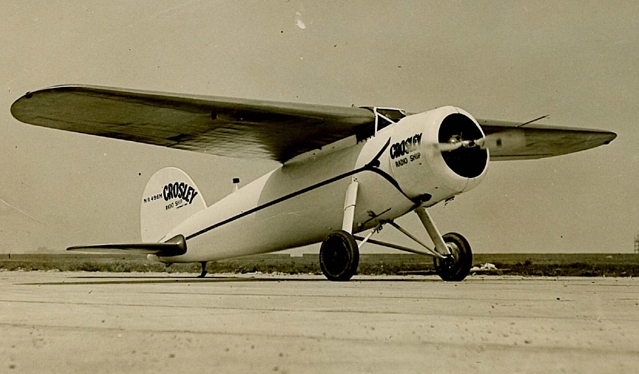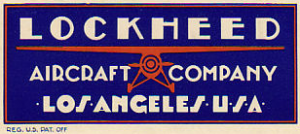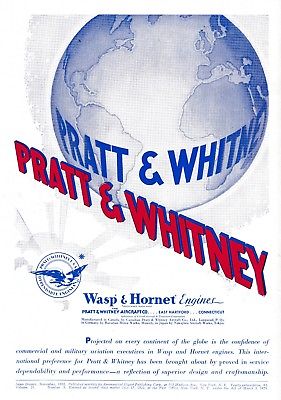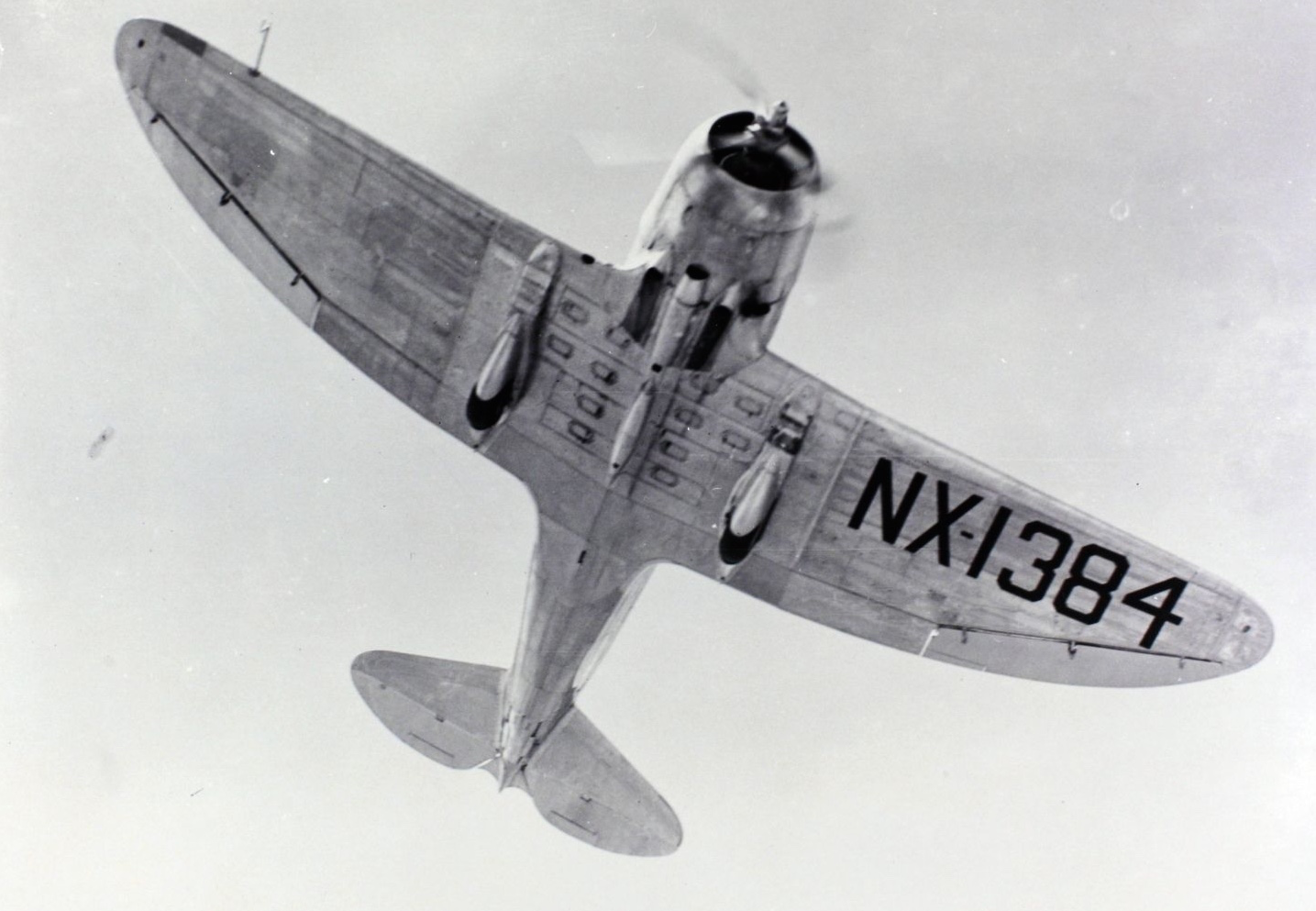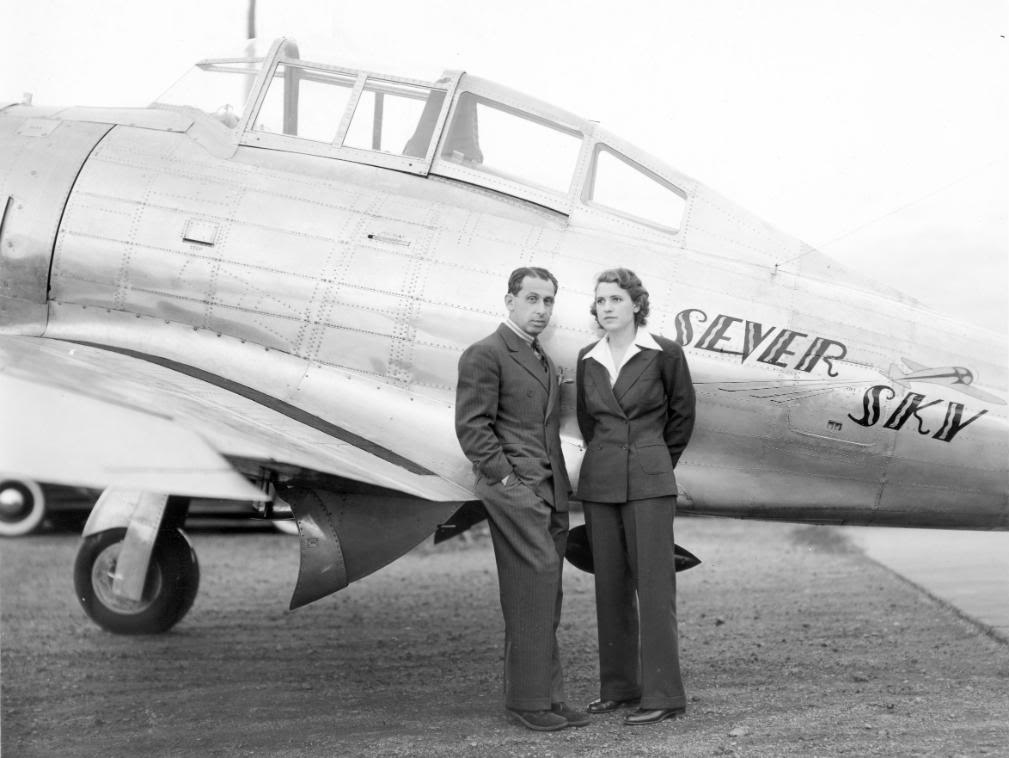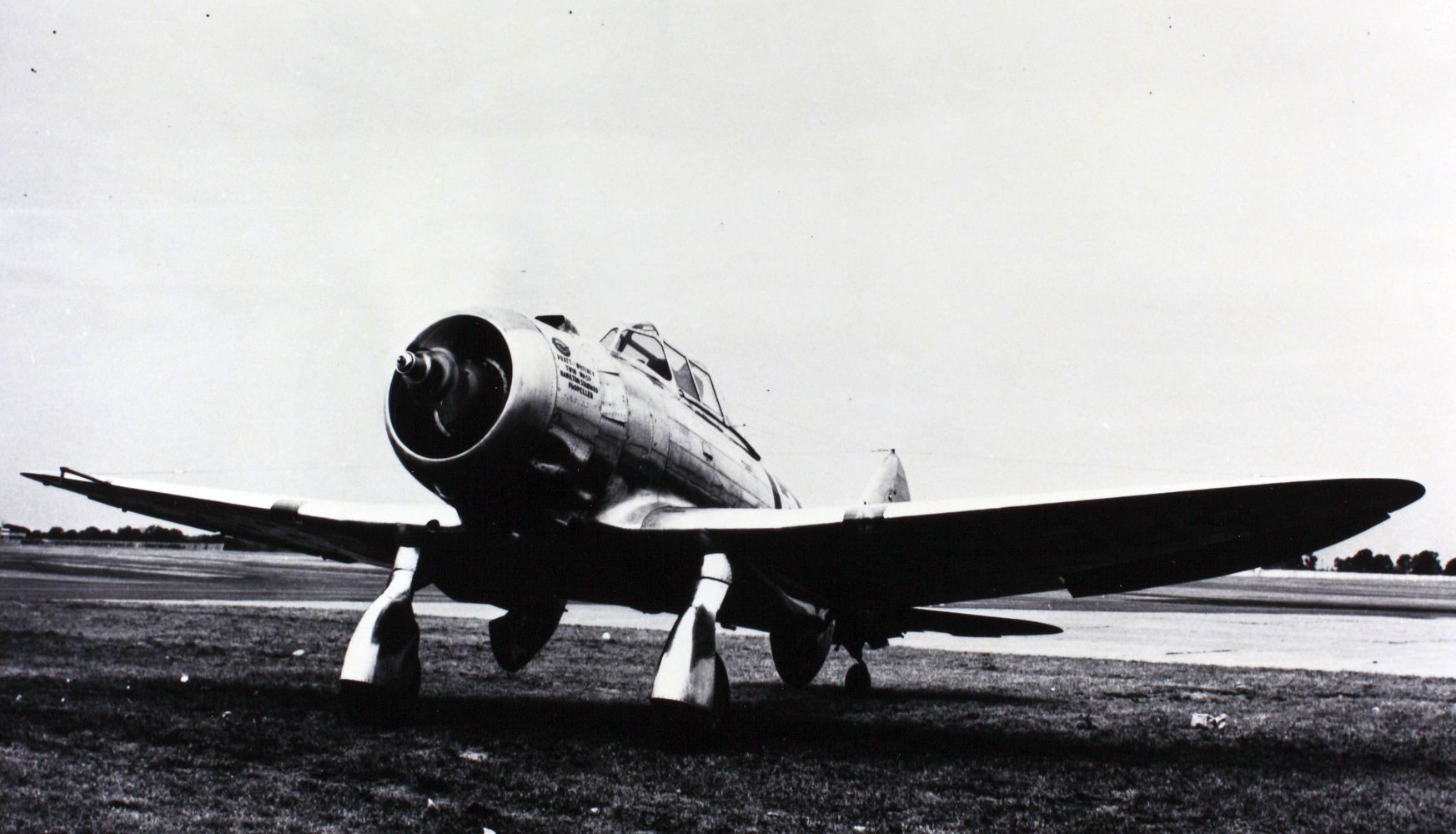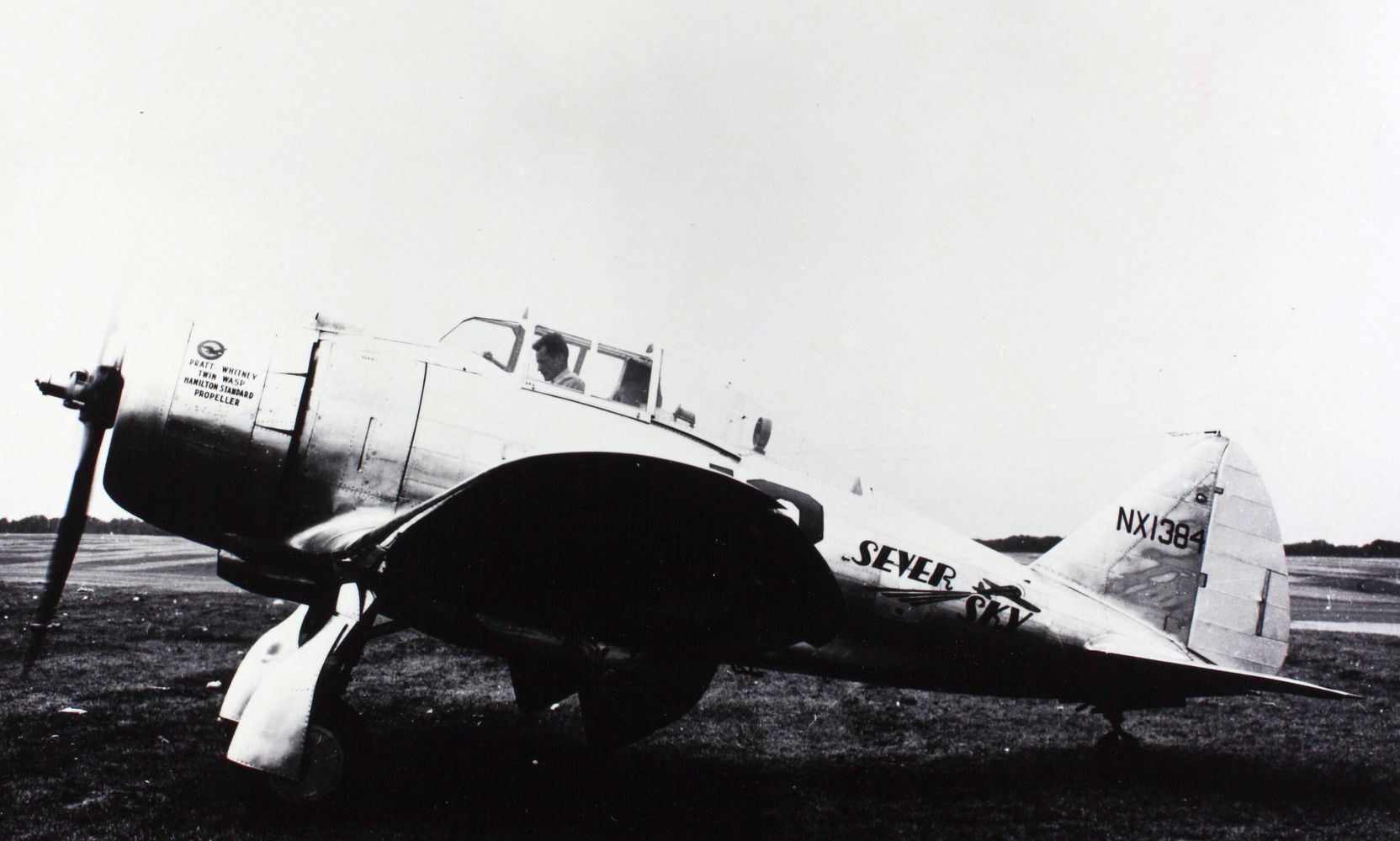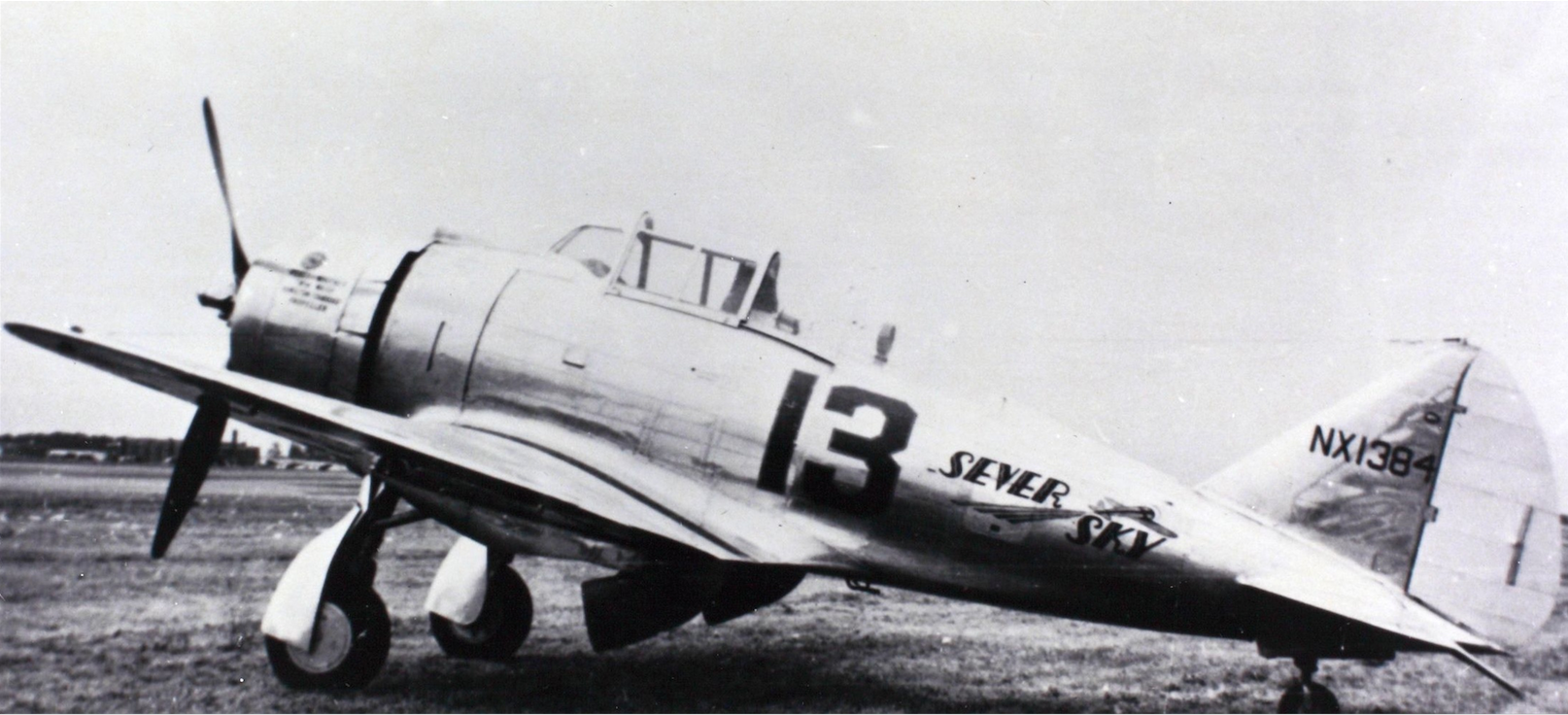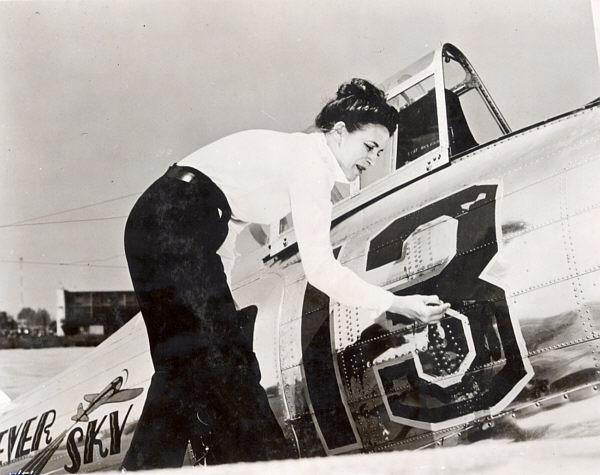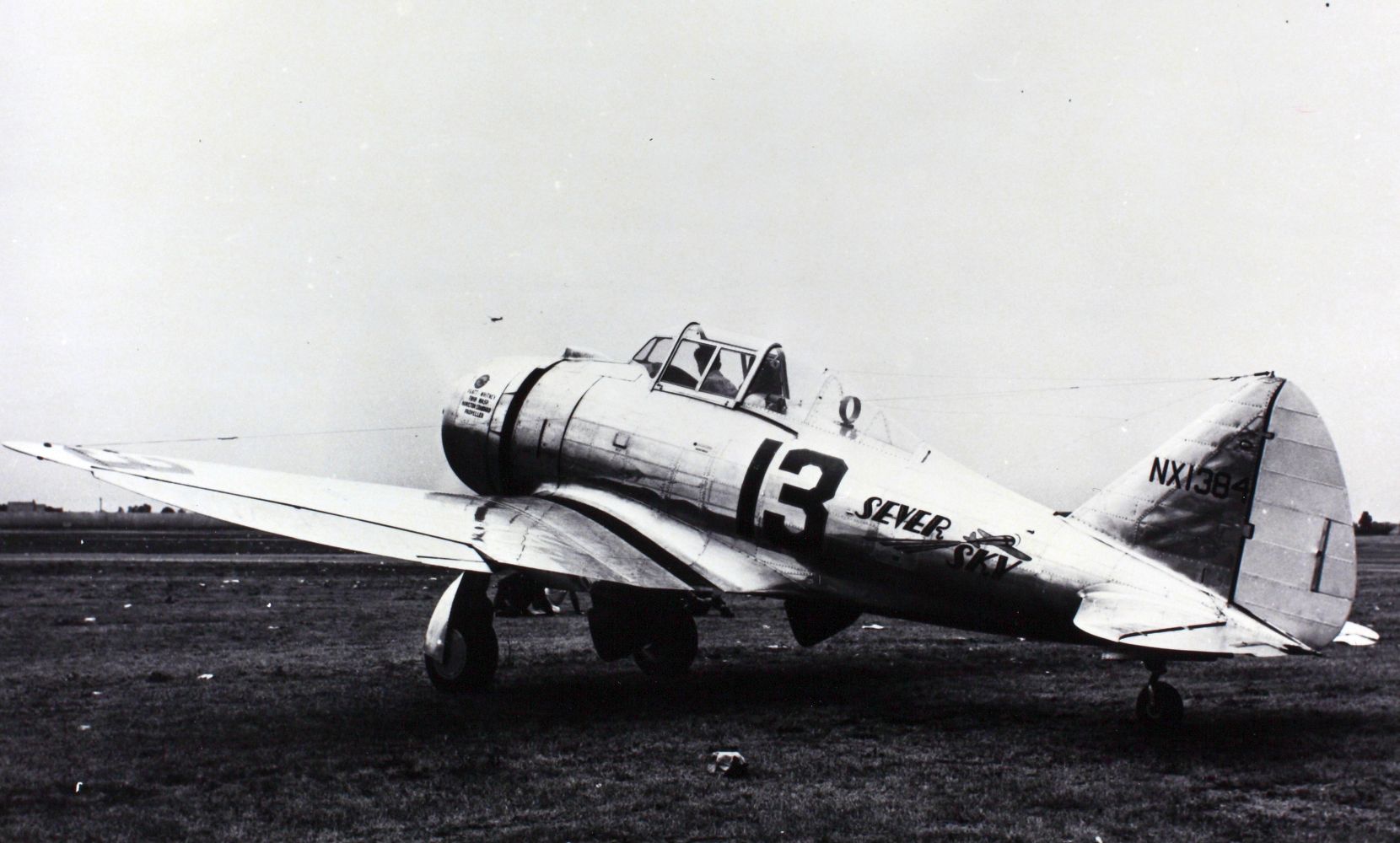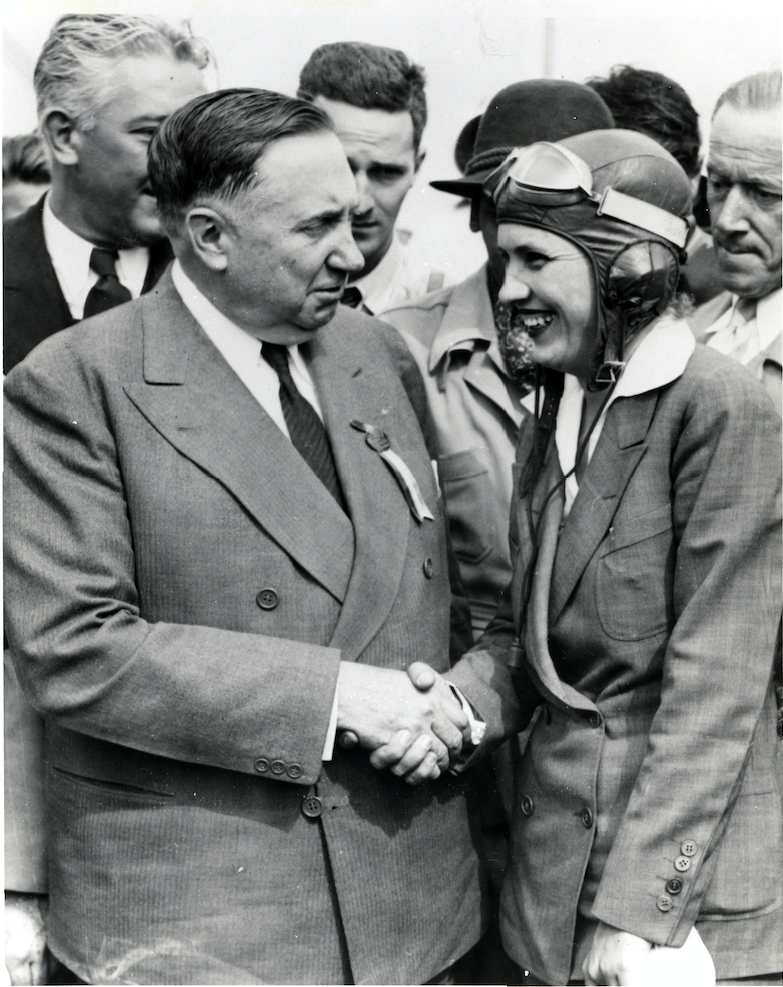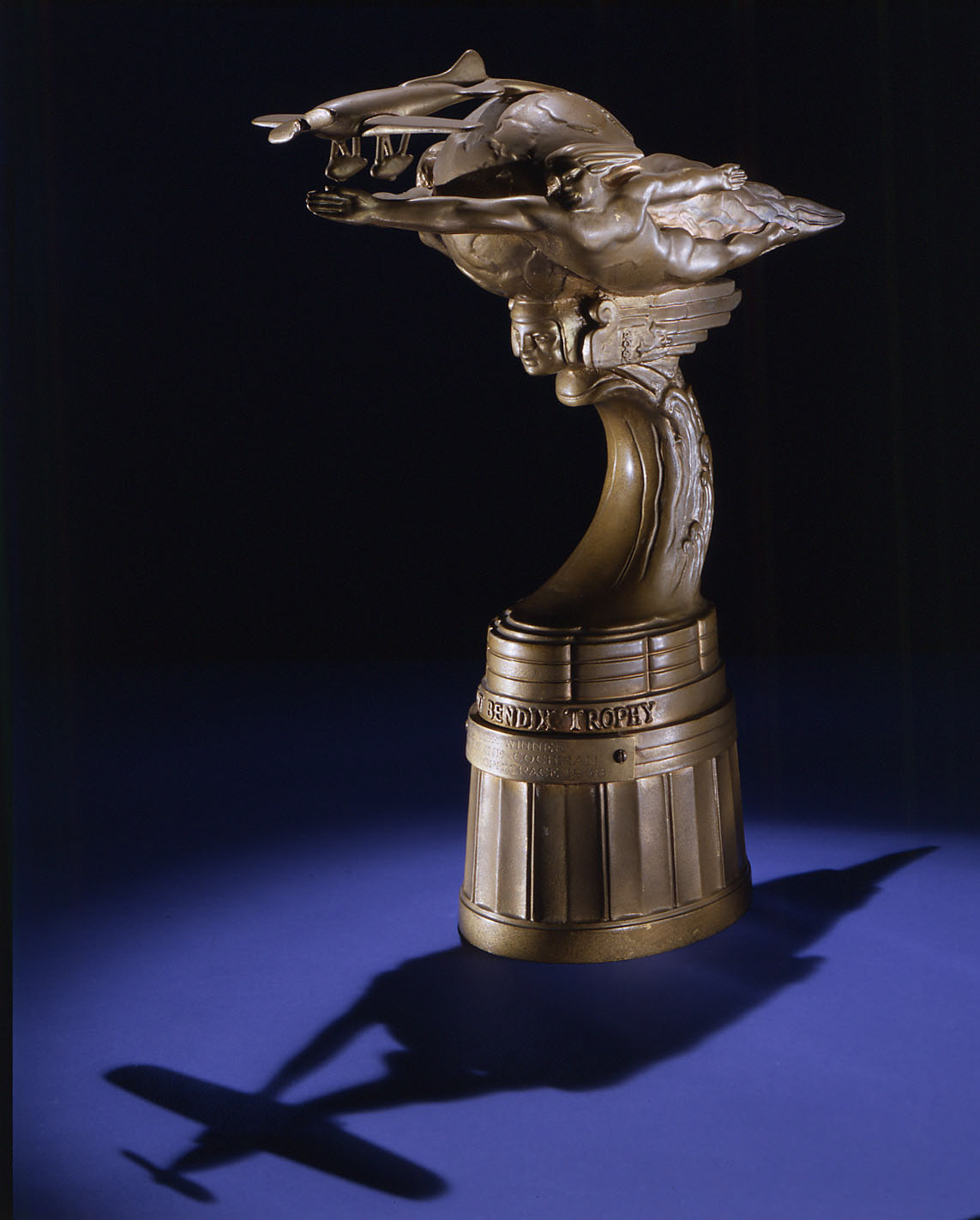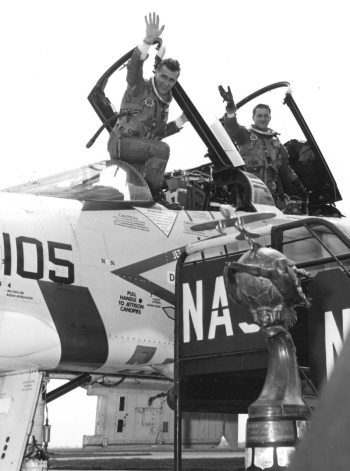
24 May 1961: Lieutenant Richard Francis Gordon, Jr., United States Navy, with Radar Intercept Officer Lieutenant (j.g.) Bobbie R. Young, flew from Ontario International Airport, east of Los Angeles, California, to Floyd Bennett Field, New York, with their McDonnell F4H-1F Phantom II, Bu. No. 148270. The duration of their flight was 2 hours, 47 minutes, 0.01 seconds, for an average speed of 1,399.66 kilometers per hour (869.71 miles per hour). For their accomplishment, they won the Bendix Trophy.
The Associated Press reported:
NAVY PLANE SETS NEW U.S. SPEED MARK
Jet Crosses Country in Two Hours And 48 Minutes
New York, May 24 (AP)—A Navy jet fighter plane flashed from coast to coast today in two hours 48 minutes, to eclipse a record that had stood since 1957.
Said Lt. Richard F. Gordon, 31, of Seattle, who piloted the fastest plane across the nation at an average speed of 871.38 m.p.h.:
“It was a wonderful trip. The weather was fine all along the route. I feel great, but I’m real tired.”
As the three F4H-1 Phantoms zoomed down from 50,000 feet for a landing at Floyd Bennet Field [sic], shock waves exploded ahead of them with a thunder-like clap that startled metropolitan residents on the ground below.
Five Phantoms Start
The transcontinental flight from Ontario at 7.59 A.M. (P.D.T.) on the 2,445.9 mile hop to New York in the twentieth renewal of the Bendix Trophy races. Tanker planes waited to refuel them over Albuquerque (N.M.), St. Louis, and between Detroit and Pittsburgh.
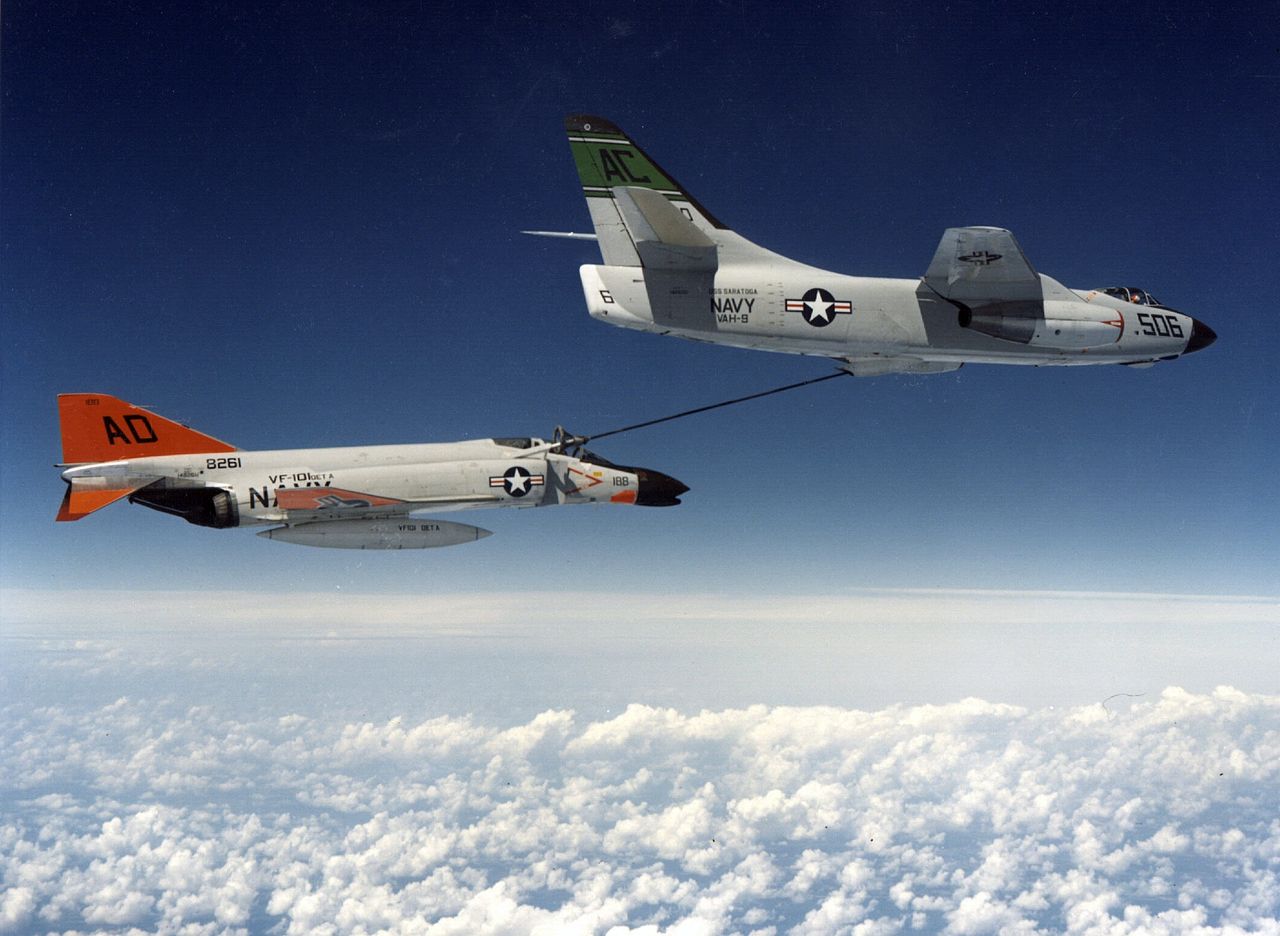
One of the five planes encountered trouble over Albuquerque and dropped out of the race. A second was held up by refueling problems over Albuquerque and St. Louis and straggled into Floyd Bennet and [sic] hour and twenty minutes behind the pacesetters.
Sharing the Bendix Trophy with Lieutenant was his radio-intercept officer, Lt. (J.G.) Bobbie R. Young, 34, of Modesto, Cal. Their average speed was the highest ever in the trophy races, that began in 1931 with James H. Doolittle setting an average mark of 223 m.p.h. between Los Angeles and Cleveland.
Time Certified
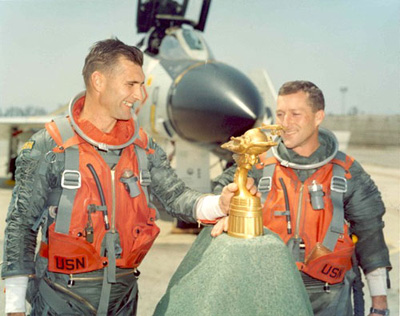
The two other craft that accompanied Lieutenant Gordon’s finished in the unofficial time of 2 hours and 57 minutes, and 3 hours and 3 minutes. Lieutenant Gordon’s time was certified as official by the Navy, subject to approval of international aviation authorities.
Rear Admiral Frank A Brandley, assistant chief of naval operations for air, greeting the fliers here, pointed out that had Gordon flown in the opposite direction, he would have landed in California earlier than he took off from New York—because of the time differential.
The supersonic Phantoms are carrier-based Navy fighter planes built by McDonnell Aircraft, of St. Louis.
The Bendix races were organized to test pilot training, equipment and technical skills of American aviation. The last previous race was held in 1957, between Chicago and Washington. The 1957 record was not set in a Bendix race.
—The Sun, Vol. 249, No. 8, Baltimore, Thursday, 25 May 1961, Page 9, Column 1
The following is the U.S. Navy’s official biography of Richard Gordon:
Department of the Navy
Office of Information
CAPTAIN RICHARD F. GORDON, JR., UNITED STATES NAVY
Richard Francis Gordon, Jr., was born in Seattle, Washington, on October 5, 1929, son of Richard F. and Angela Frances (Sullivan) Gordon. He attended North Kitsap High School, Poulsbo, Washington, and the University of Washington at Seattle, from which he received the degree of Bachelor of Science in Chemistry in 1951. He enlisted in the U. S. Naval Reserve, served as an Airman at the Naval Air Station, Sand Point, Washington. Appointed Aviation Cadet in August 1951, he had flight training at the Naval Air Basic Training Command, Naval Air Station, Pensacola, Florida, and at the Naval Air Advanced Training Command, Naval Air Station, Corpus Christi, Texas. Designated Naval Aviator and commissioned Ensign, U. S. Naval Reserve, on March 25, 1953, he subsequently advanced in rank to that of Captain, to date from December 11, 1969, having transferred to the Regular Navy on August 3, 1955.
After receiving his “Wings” in March 1953, he had instruction for two months at the naval School, All Weather Flight, Naval Air Station, Corpus Christi, and for one month at the Naval Auxiliary Air Station, Kingsville, Texas. In June of that year he joined Fighter Squadron ELEVEN to serve as Navigation Officer, Communications Officer and Naval Aviator until January 1957, when he reported for instruction at the Naval Air Test Center, Patuxent River, Maryland. In August that year, he transferred to the Flight Test Division, Naval Air Test Center, where he had duty as a Project Pilot, Project Officer, and First Lieutenant until March 1960.
He next joined Fighter Squadron ONE HUNDRED TWENTY-ONE, where served as Fleet Replacement Pilot, Fleet Air Detachment Duty Officer, and Flight Instructor. In November 1961, he was assigned for a month to Fighter Squadron ONE HUNDRED FORTY-TWO as Operations Officer, then transferred to Fighter Squadron NINETY-SIX, for duty as Naval Aviator, Naval Aviation Training Operations Officer and Assistant Operations Officer. While in that assignment he was awarded the Distinguished Flying Cross for “…extraordinary achievement in aerial flight on May 24, 1961, while participating in the Bendix Trophy Race as Pilot of an F4H Phantom Aircraft…” The citation continues…
“…Exercising outstanding airmanship and resourcefulness, (he) succeeded in winning the Bendix Trophy Race and in establishing a new transcontinental speed record for the jet aircraft from Los Angeles, California to New York, New York, with an elapsed time of two hours and forty-seven minutes, which is twenty-one minutes under the previous record time for this event…”
From July to December 1963 he had instruction at the U. S. Naval Postgraduate School, Monterey, California. Selected as one of the third group of astronauts by the National Aeronautics and Space Administration, in October 1963, he began training at the Manned Spacecraft Center, Houston, Texas, in December 1963. He has served as backup pilot for the Gemini VII flight.
On September 12, 1966, he served as pilot for the 44 orbit Gemini XI mission. He executed docking maneuvers with the previously launched Agena and performed two periods of extravehicular activity which involved attaching a tether to the Agena and retrieving a nuclear emulsion experiment package. Other highlights of the flight included the successful completion of the first tethered station-keeping exercise, establishment of a new record-setting altitude of 850 miles, and the first closed-loop controlled reentry. The flight was concluded on September 15, 1966, with the spacecraft landing in the Atlantic, two and one-half miles from the prime recovery ship USS Guam (LPH-9). He was awarded a Gold Star in lieu of the Second Distinguished Flying Cross with the following citation:
“For heroism and extraordinary achievement…as an Astronaut with NASA from September 12 to 15, 1966 aboard Gemini XI. While serving as Pilot, Commander (then Lieutenant Commander) Gordon completed a space flight of seventy-one hours and sixteen minutes. A rendezvous in the first revolution, docking, two periods of extravehicular activity, an exercise in the dynamics of two spacecraft linked together by a one hundred-foot strap and full-automatic reentry highlighted the Gemini XI mission. During this period, Commander Gordon carried out the re-docking maneuver, the first docking by a ‘right-seater.’ During the umbilical extravehicular activity, he left the spacecraft to retrieve the S-9 Nuclear Emulsion Experiment package from the Agena…”
In addition to the Distinguished Flying Cross with Gold Star, Captain Gordon has received the NASA Exceptional Service Medal and the Navy Astronaut Wings. He is also entitled to the Navy Occupation Service Medal and the National Defense Service Medal with bronze star.
He is a member of the Society of Experimental Test Pilots. His hobbies include water skiing, sailing and golf.
He has logged more than 3,300 hours flying time, 2,800 hours in jet aircraft.
[END]
The Bendix Trophy-winning Phantom II, redesignated F-4A-4-MC in 1962, crashed near San Clemente Island, off the Pacific coast of southern California, 4 May 1964.
© 2019, Bryan R. Swopes
